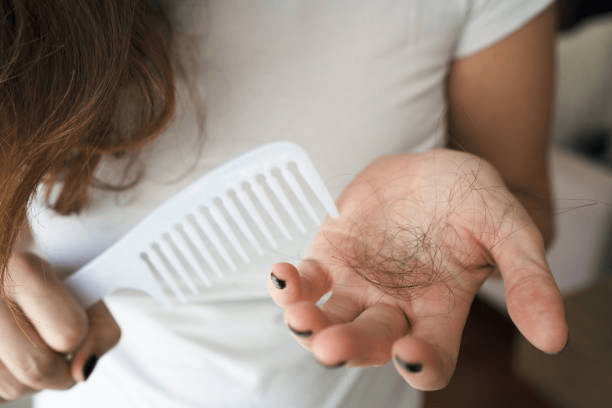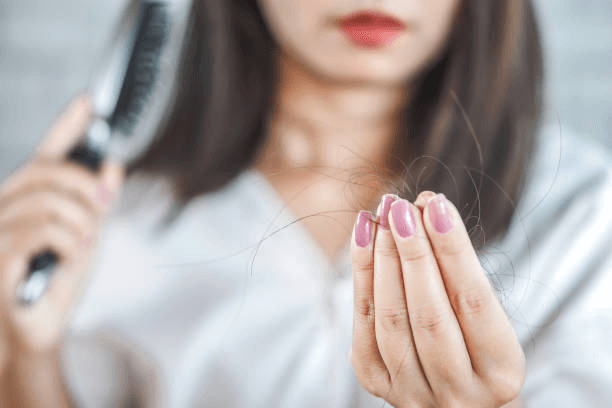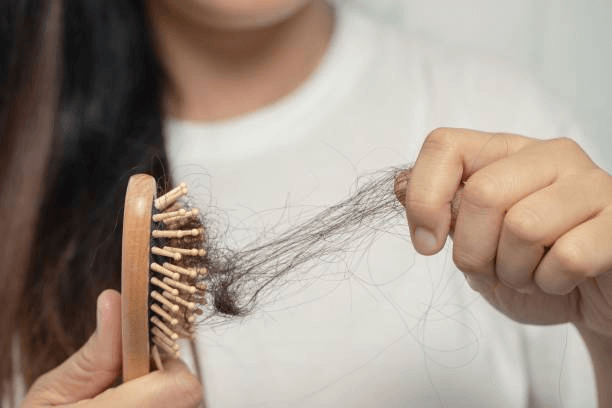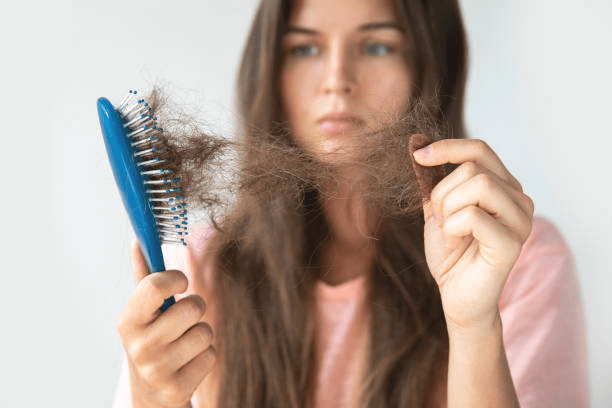Hair loss can have many different reasons and is a psychological burden for many sufferers. Both hormonal changes and inflammation can lead to hair loss, often due to a vitamin or trace element deficiency. Different forms of hair loss lead to typical loss patterns, which needs diagnosis as well as detailed physical exam and blood analysis. Depending on the cause, local and systemic therapies are available.
What Is Hair Loss?

It is normal to lose around 70 to 120 hairs a day. Since the hair roots remain with this “normal” hair loss, the hair can grow back, and there are no visible changes. If the amount precipitated exceeds this average, it is referred to as effluvium. If there is a clearing of the hair or hairless areas, this is called alopecia. Depending on the origin, hair loss can be the only symptom, or it can be accompanied by changes to the fingernail and skin, for example. Also, eczema and itching of the scalp may occur along with hair loss and general malaise.
What Causes Hair Loss?

The reasons for hair loss are manifold and range from hormonal disorders to autoimmune processes to stress-related causes.
Androgenetic alopecia is one of the most common reasons for hair loss. There is too much testosterone in the body, which shortens the growth phase of the hair. As a result, the hair becomes thinner, and hair that has fallen out can no longer be adequately replaced. This hair loss can occur in both men and women, but it manifests itself in different forms. While women usually have a rather diffuse pattern and they rarely lose their hair completely, men tend to have the typical receding hairline at the temples and a bald head on the highest point of the head. Androgenetic alopecia is usually progressive and rarely recovers on its own.
Another form of hair loss is alopecia areata, or circular hair loss. This results in patchy areas in which the hair falls out. The so-called exclamation mark hairs, which become thinner towards the tip and then break off, are typical. Most places can be found in the scalp hair, in men, the beard can also be affected. Alopecia areata is an inflammatory disease in which the immune system cells incorrectly attack the hair roots. In most cases, the gaps will grow back on their own after a certain period of time, but medication can also be used to help.
In addition to these classic hair loss diseases, other causes can also lead to hair loss. These include chronic diseases such as diabetes mellitus or lupus, acute inflammations such as shingles or the flu, as well as hormone fluctuations, and thyroid problems. An iron deficiency can also make itself felt with anemia and hair loss, as can vitamin, zinc, and selenium deficiencies. Also, as a side effect of medication hair loss, such as the ADHD drug Ritalin or beta blockers. As part of cancer treatment with chemotherapy, both scalp hair and the rest of the body hair can go out because these drugs attack all rapidly dividing cells. Ultimately, psychological stress, such as stress or depression, can lead to increased hair loss. With all of these causes, the loss is mostly more diffuse.
How Can Hair Loss Be Treated?

Treatment for hair loss depends on the suspected cause. If there are chronic diseases or inflammations, these should be treated in the hope that the hair loss will then also decrease. In most cases, iron or trace element deficiencies can be compensated for by substitution or a change in diet.
Androgenetic hair loss can be treated with the drug Minoxidil, which is applied to the scalp as a liquid or foam and is said to lead to a longer growth phase of the hair. Treatment must last for at least six months up to two years, but visible results can be expected from around three months.
The drug finasteride is also available for internal use, which can help men get thicker hair again. In higher doses, this active ingredient can lead to erectile dysfunction and reduced libido. The hair-promoting effect of this drug has not been proven in women, and it can also lead to deformities in babies in pregnant women.
An alternative is spironolactone, which is mostly used as a high blood pressure medication, which shows better results in women, but is also not allowed to be used during pregnancy.
Because alopecia areata is an inflammatory disease, anti-inflammatory substances such as glucocorticoids are used for treatment. They can be given both as an injection and topically. Alternative therapy methods are inspired by other skin diseases such as psoriasis and stimulate hair growth through light treatments.
In addition to these attempts to stop hair loss, various techniques hide the loss. While women are more likely to resort to wigs or hairpieces, men often opt for the radical variant and shave off their hair. Surgically, there is the option of transplanting skin with hair roots from other areas of the head or body onto the bald areas. Especially with circular hair loss, the bald area is simply cut out, sewn, and gathered in some cases. If the hair loss also affects the eyebrows, these can be traced as tattoos; also stand for the eyes with artificial eyelashes available.






